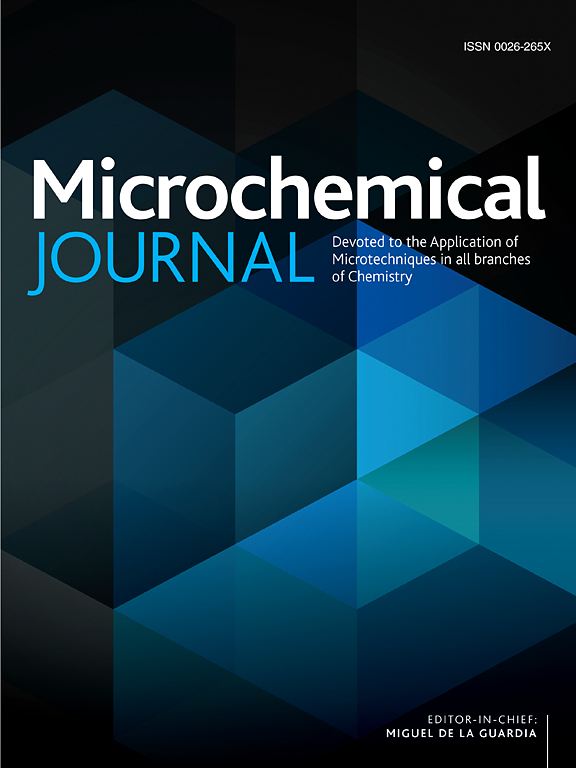Highly sensitive determination of perfluorooctanoic acid in food and river samples with an electrochemical platform based on MIP and modified MWCNTs
IF 4.9
2区 化学
Q1 CHEMISTRY, ANALYTICAL
引用次数: 0
Abstract
Perfluorooctanoic acid (PFOA), one of the emerging persistent organic pollutants, has received great concern due to high resistance to degradation and potential health risks. Numerous reports have revealed its presence in environment (soil, water, air), multiple foods and human blood with certain levels. In this study, a selective electrochemical molecularly imprinted sensor (MIP/CMC-MWCNTs@GCE) based on a template molecule of PFOA and a functional monomer of methacrylic acid (MAA) was developed via electro-polymerization on the surface of a glassy carbon electrode modified with carboxymethyl cellulose (CMC) and multiwalled carbon nanotubes (MWCNTs) for PFOA detection. The composite electrode was characterized using scanning electron microscopy (SEM) and Fourier transform infrared spectroscopy (FTIR) to investigate its microstructure and surface groups. Cyclic voltammetry (CV) results and electrochemical impedance spectroscopy (EIS) also showed its excellent electrochemical performance. After optimizing the experimental conditions by differential pulse voltammetry (DPV), the obtained sensor quantified PFOA in a wide range of 0.1–2000 ng mL−1 with a low detection limit (LOD) of 0.1287 ng mL−1. Finally, this rapid sensing method has been successfully applied in chicken, peach, tomato and river samples with a recovery rate of 92.00–113.19 %. These results present that the composite sensor has good selectivity, stability and high sensitivity for PFOA determination, which may be a promising alternative for on-site and real-time monitoring in complex samples.

求助全文
约1分钟内获得全文
求助全文
来源期刊

Microchemical Journal
化学-分析化学
CiteScore
8.70
自引率
8.30%
发文量
1131
审稿时长
1.9 months
期刊介绍:
The Microchemical Journal is a peer reviewed journal devoted to all aspects and phases of analytical chemistry and chemical analysis. The Microchemical Journal publishes articles which are at the forefront of modern analytical chemistry and cover innovations in the techniques to the finest possible limits. This includes fundamental aspects, instrumentation, new developments, innovative and novel methods and applications including environmental and clinical field.
Traditional classical analytical methods such as spectrophotometry and titrimetry as well as established instrumentation methods such as flame and graphite furnace atomic absorption spectrometry, gas chromatography, and modified glassy or carbon electrode electrochemical methods will be considered, provided they show significant improvements and novelty compared to the established methods.
 求助内容:
求助内容: 应助结果提醒方式:
应助结果提醒方式:


